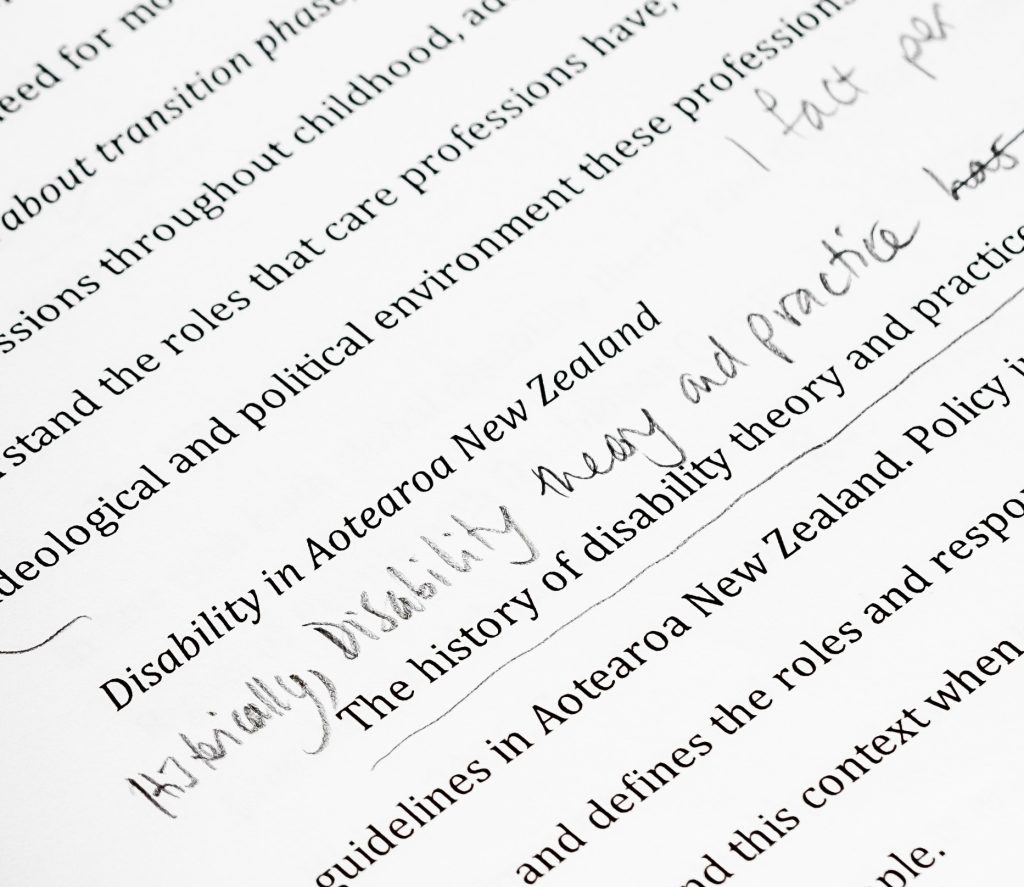You’ve had lots of advice about how to write an essay. You’ve been given templates and organising principles. You’ve seen formulae for the introduction, body paragraphs, and conclusion. The advice has been sensible and specific. So why, when you sit down to write that dreaded essay, does it still feel impossible?
WHY write the essay? Why write the sentences and paragraphs in it? What’s the point?
What’s the essay actually for?
If it’s an exam essay, the reader is your examiner. The pragmatic (or cynical, depending on your point of view) reason you’re writing is to impress them. You’re trying to persuade them that you have a brain, and that you can use it to:
- Remember important stuff
- Think for yourself
- Organise those thoughts
- Defend them
- And decide, for yourself, what to believe.
More generally, the function of an essay is to convince your reader that you know what you’re talking about. To do that, you must make, and prove, your case.
The different parts of the essay do that in different ways. Let’s look at each in turn, beginning with how to start.
Introduction
The introduction is the taster for the essay.
What is the introduction for? To grab your reader’s attention and reassure them that they’re in safe hands. You’ll grab them by having a clear stance on the topic. You’ll reassure them by showing you know what you’re talking about.
Short and snappy is definitely the way to go here. As briefly as you can, do these things:
- Show you’re knowledgeable about the topic.
- Show you understand it.
- Show your stance on it.
There are lots of opinions on which order you should do these in. However, as long as you cover these points, I think you’ll be fine.
Here’s an example, to show how it works. Suppose your topic was: Which is the best high school in New Zealand?
Note: I’ve made up everything – the name of the school, the region, the statistics – so don’t bother trying to fact check me!
You might write:
There are 422 secondary schools in New Zealand, each with their own character, so saying that one is ‘the best’ is difficult. When academic results, socio-economic data and community engagement are considered, however, Morris College, in Northern Eastland, does rise above the rest.
There’s not much written here, but it does the job. Here’s how:
There are 422 secondary schools in New Zealand, each with their own character, (Shows I know what I’m talking about.)
so saying that one is ‘the best’ is difficult. (Shows I understand the question.)
When academic results, socio-economic data and community engagement are considered, however, (Shows I know what I’m talking about).
Morris College, in Northern Eastland does rise above the rest. (My own, clear opinion.)
Body Paragraphs
Body paragraphs do the grunt work of your essay.
Why write these? They convince your reader you know what you’re talking about, and prove that your opinion is correct. That’s pretty much it.
Body paragraphs contain a mixture of reasons and proof. Like the introduction, there are many ‘right’ ways to structure paragraphs. You may have been given an acronym to help you remember what the different sentences are for – PEEL (point, explanation, example, link) for example. These acronyms are useful but can be reductive. What I mean by that is that they can encourage you to do the minimum requirements, by implying you need only one of each kind of sentence. As well, there’s an implication that you always have to write the sentences in that order (boring!) rather than changing it up for fluency and interest.
To go back to my example, it’s not enough, is it, to just say ‘Morris College is the best.’ Every other high school in the land would rise up in protest. To convince you, I need to give you my reasons. They might be:
- Morris College has the best co-curricular activities.
- It has a superb academic record.
- The school’s community loves it.
- It has a beautiful campus
- Staff and students have a high degree of environmental responsibility.
Even then, someone could probably say, “Hang on, my school has all those things. That’s not enough to prove you’re right!” That’s why each of these reasons should be the basis for a body paragraph. Each reason would be expressed in one sentence (the statement, or topic sentence). The rest of the paragraph is about proving your point. The more precise the proof, the more convincing it is. That’s why quotations from texts, or statistics, or scientific evidence, are so compelling.
Here’s some convincing evidence for the first point (notice how there are [made up] numbers or percentages wherever possible):
- The school has 23% more sports teams, cultural groups and academic groups (per capita) than any other school in NZ.
- 79% of Year 13 students who engage in a co-curricular activity also coach junior students in that activity.
- The first XV, top debating team, dance team and choir were all the 2020 regional and/or national champions, and a student at the school recently won the National Squash championship.
A first draft of this body paragraph might just jam this information together:
Morris College has the best co-curricular activities. The school has 23% more sports teams, cultural groups and academic groups (per capita) than any other school in NZ. 79% of Year 13 students who engage in a co-curricular activity also coach junior students in that activity. The first XV, top debating team, dance team and choir were all the 2020 regional and/or national champions, and a student at the school recently won the National Squash championship. Morris College offers students a chance to participate, contribute and achieve success.
So far, I’ve made a statement and given you a lot of evidence. It’s kind of boring, though, and hard to read, isn’t it? And it’s hard to see exactly how the evidence proves the point?
What’s missing are the linking words and sentences – linking sentences to sentences, the evidence to the statement, and the statement to the topic. These words and sentences are often called ‘explanation,’ but that’s always confused me. I prefer to Think of the linking bits like little bridges, from word to word, sentence to sentence, and paragraph to paragraph. These links will help to create flow in your essay. Let’s have a go at improving the paragraph.
Morris College has 23% more sports teams, cultural groups and academic groups (per capita) than any other school in NZ. This suggests a huge investment, from both school and community, in the wellbeing of students. That the students appreciate this investment, and pay it forward, is shown by the fact that 79% of Year 13 students who engage in a co-curricular activity also coach junior students in that activity. It’s not just about joining in, though: the school has a track record of winning as well. The first XV, top debating team, dance team and choir were all the 2020 regional and/or national champions, and a student at the school recently won the National Squash championship. It’s clear that Morris College offers students a unparalleled chance to participate, contribute and achieve success.
Now let me show you what I mean by links:
Morris College has 23% more sports teams, cultural groups and academic groups (per capita) than any other school in NZ.
This suggests (the word ‘this’ links to the previous sentence, and ‘suggests’ tells the reader you’ve been thinking about the evidence)
a huge investment, from both school and community, in the wellbeing of students. (Here’s your thinking.)
That the students appreciate this investment, and pay it forward (Here’s more thinking),
is shown by (two linking words that signal upcoming evidence) the fact that 79% of Year 13 students who engage in a co-curricular activity also coach junior students in that activity.
It’s not just about joining in, though (More sentence to sentence linking):
the school has a track record of winning as well.(Looks forward to the next fact, and lets the reader put what that fact into context.) The first XV, top debating team, dance team and choir were all the 2020 regional and/or national champions, and a student at the school recently won the National Squash championship.
It’s clear that Morris College offers students a unparalleled chance to participate, contribute and achieve success (This is the topic sentence, and I’ve left it until last).
You’ll see that my paragraph doesn’t really fit the PEEL acronym, because there’s lots of evidence, the topic sentence is last and the ‘explanation’ is often just a few words. It’s still a perfectly good paragraph, though.
Conclusion
Sums it up and shows off your thinking.
So you’ve grabbed the attention of your reader and given a clear indication of your thinking in a snappy introduction. You’ve proved your point with body paragraphs. How do you finish it off? In fact, why do you need to, if the point’s already been made?
Conventional thinking says you need to summarise the essay. I suppose it’s necessary to remind the reader of your main points, but that seems boring to me. The reader doesn’t need much reminding – they’ve just read the essay! So I’d say do summarise, but as briefly as you can, and don’t use the exact words/phrases you did in your topic sentences.
What else? Various sources say to write about the ‘significance,’ or broader implications of your argument’, or ‘connect with your reader.’ The clearest explanation I’ve ever heard was from Dr Ian Hunter, the man behind Write That Essay. He told me this:
“Your role, after re-stating your argument, is to show thoughtful insight. So, re-state the argument, ping how you proved it, then tell me two things we learn from this, or two things we might consider in the future as a result of all you have discussed.”
What I like about this advice is that it’s specific. It tells me why I’m writing the conclusion: to show what happens if my opinion is right. If I use this advice, my conclusion ends up something like this:
Morris College is clearly the best high school in New Zealand, because it is successful in all the areas that make good schools. It is the combination of great academic, sporting and cultural success, with a broader sense of engagement with the community and the world, that make it number one. All high schools should look to Morris College as a model for their own systems. If they did, secondary education in New Zealand would soon rival the best in the world.
Writing an essay is hard work. There’s no getting around that. Sometimes it feels pointless. Knowing why you’re writing helps – it gives you purpose. Sure, the essay may only exist in an examination answer book, but at least you now know that, somewhere in the country, there’s one person who was convinced by what you had to say.
I hope these tips have helped.
Good luck!

